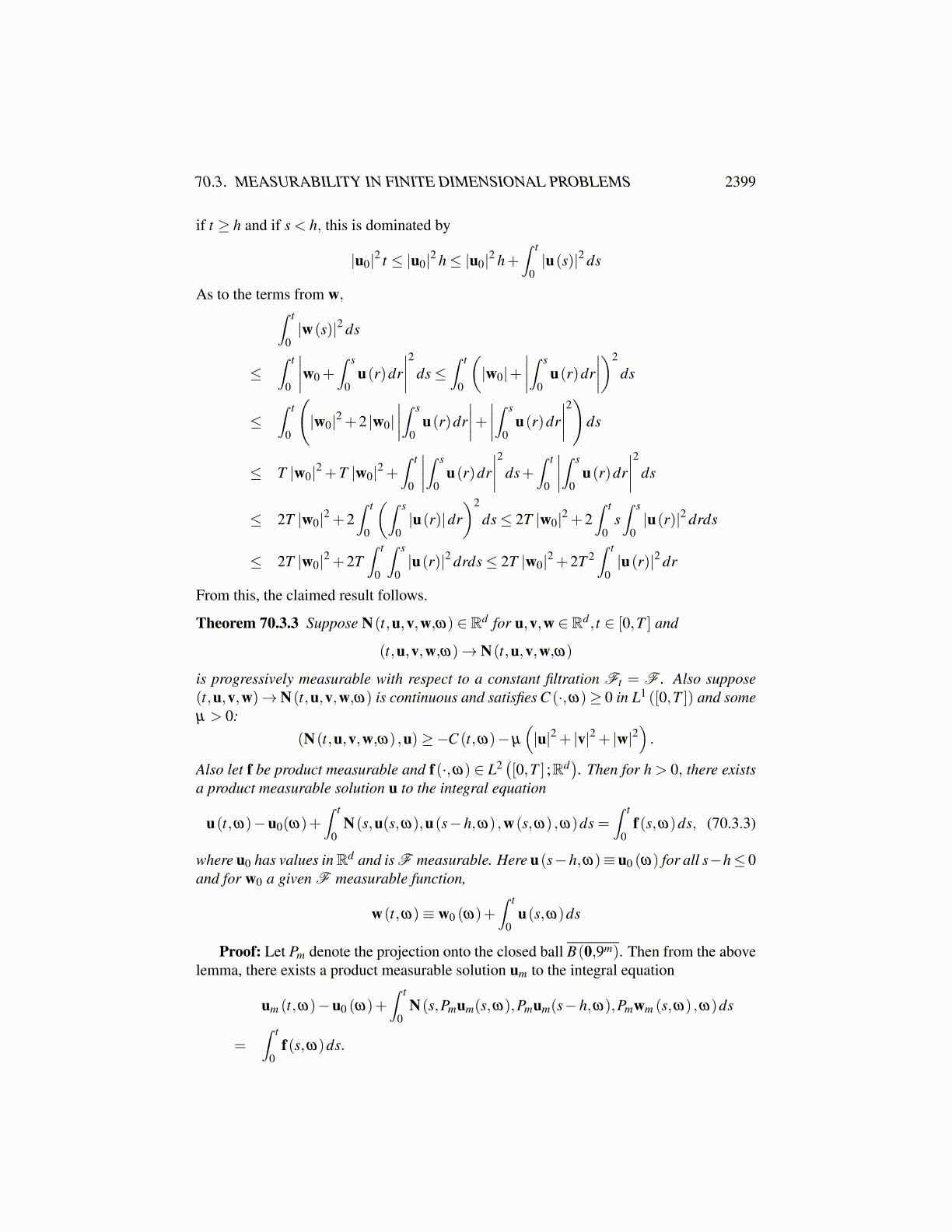
70.3. MEASURABILITY IN FINITE DIMENSIONAL PROBLEMS 2399
70.3 Measurability In Finite Dimensional ProblemsWhat follows is like the Peano existence theorem from ordinary differential equations ex-cept that it provides a solution which retains product measurability. It is a nice example ofthe above theory. It will be used in the next section in the Galerkin method.
Lemma 70.3.1 Suppose N(t,u,v,w,ω) ∈ Rd for u,v,w ∈ Rd , t ∈ [0,T ] and
(t,u,v,w,ω)→ N(t,u,v,w,ω)
is progressively measurable relative to the filtration consisting of the single σ algebra F .Also suppose that (t,u,v,w)→ N(t,u,v,w,ω) is continuous and that also N(t,u,v,w,ω)is uniformly bounded in (t,u,v,w) by M (ω) . Let f be P measurable and f(·,ω) ∈L2([0,T ] ;Rd
). Then for h > 0, there exists a P measurable solution u to the integral
equation
u(t,ω)−u0(ω)+∫ t
0N(s,u(s,ω),u(s−h,ω) ,w(s,ω)ω)ds =
∫ t
0f(s,ω)ds.
Here u0 has values in Rd and is F measurable, u(s−h,ω) ≡ u0 (ω) if s−h < 0 and forw0 a given F measurable function,
w(t,ω)≡ w0 (ω)+∫ t
0u(s,ω)ds.
Proof: Let un be the solution to the following equation:
un (t,ω)−u0(ω)+∫ t
0N(s,τ1/nun(s,ω),un (s−h,ω) ,τ1/nwn(s,ω),ω
)ds
=∫ t
0f(s,ω)ds.
where here τ1/n is defined as follows. For δ > 0,
τδ u(s)≡{
u(s−δ ) if s > δ
0 if s−δ ≤ 0
It follows that (t,ω)→ un (t,ω) is P measurable. From the assumptions on N, it followsthat for fixed ω,{un (·,ω)} is uniformly bounded:
supt∈[0,T ]
|un (t,ω)| ≤ |u0(ω)|+∫ T
0M (ω)ds+
∫ T
0|f(s,ω)|ds =: C (ω) ,
and is also equicontinuous because for s < t,
|un (t,ω)−un (s,ω)|
≤∫ t
s
∣∣N(r,τ1/nun(r,ω),un (r−h,ω) ,τ1/nwn (r,ω) ,ω)∣∣dr